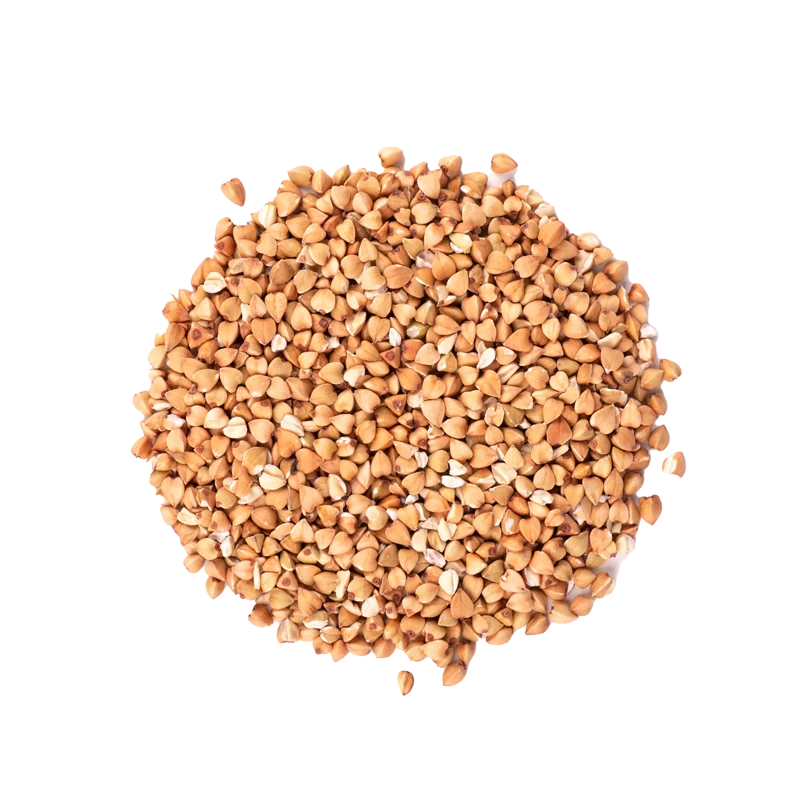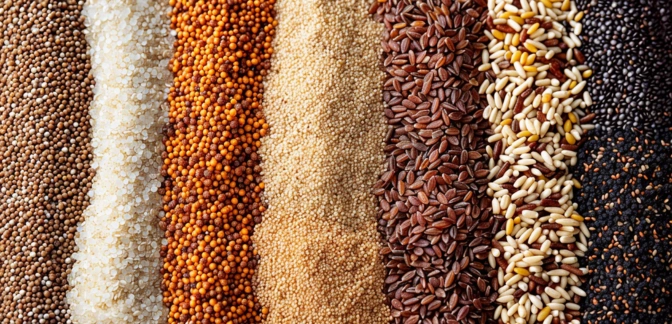Buckwheat — Nutrients, Health Benefits, And Shopping Tips

Written by Listonic Team
Last update on September 4, 2024
Nutrients
Nutrition facts
Amount per 100 g
Calories
🔥 343 kcal
| Nutrition per: 100 g | Value | % Daily Value* |
|---|---|---|
| Carbs | 72 g | 26.18% |
| Fiber | 10 g | 35.71% |
| Sugars | 0 g | - |
| Glycemic Index | 50 | - |
| Protein | 13 g | 26% |
| Sodium | 1 mg | 0.04% |
| Total Fat | 3 g | 3.85% |
*The % of Daily Value (DV) tells you how much a nutrient in a serving of food contributes to a daily diet. 2,000 calories a day is used for general nutrition advice.
Nutritionally buckwheat has unique characteristics. The protein quality of buckwheat is higher than that of wheat, soy, oats, or brown rice.
Encyclopedia of Foods. A Guide to Healthy Nutrition
13 g
🧀 Good Protein Content
10 g
🥔 Good Fiber Content
Key takeaways
Health benefits
- Gluten-free, making it a suitable grain alternative for those with celiac disease or gluten intolerance.
- Rich in fiber, supporting digestive health, promoting regular bowel movements, and maintaining a healthy gut microbiome.
- High in protein, containing all nine essential amino acids, making it a complete protein source for muscle growth and repair.
- Contains essential vitamins and minerals such as magnesium, copper, and manganese, which support energy production and overall health.
- Supports heart health by helping to lower cholesterol levels and improve blood pressure due to its rich content of antioxidants and flavonoids.
- Provides sustained energy from its complex carbohydrates, making it a great source of long-lasting energy.
Health risks
- Allergic reactions particularly in individuals allergic to buckwheat, which can cause symptoms like itching, swelling, or difficulty breathing.
- Potential for digestive issues such as bloating or gas when consumed in large quantities, especially if not accustomed to high-fiber foods.
- Oxalate content in buckwheat, which can contribute to the formation of kidney stones in susceptible individuals.
- Potential for contamination with mold or other toxins if buckwheat is not properly stored, which can pose health risks.
How to choose buckwheat
Buckwheat should be uniform in size with a fresh, earthy smell. The grains should be intact and not broken, showing they are well-handled. Look for grains that are clean and free of any dust or debris, indicating good processing and storage.
Avoid buckwheat that appears damp or has a musty smell, which can indicate poor storage conditions. Good quality buckwheat will not clump together when shaken, suggesting it’s dry and well-stored. Prefer organic varieties for optimal quality when available.

How to store buckwheat
Buckwheat should be stored in an airtight container in a cool, dry place. A pantry or kitchen cabinet is ideal to protect it from moisture and pests. Properly stored, buckwheat can last up to six months.
Moisture and heat can cause buckwheat to spoil, so these conditions should be avoided. Storing it near strong-smelling foods is not advisable, as buckwheat can absorb odors. Regularly checking for pests helps maintain its quality and safety.
✅ Extra Tip
How long does it last?
Buckwheat can last for 6 months when stored in an airtight container in a cool, dark place. If refrigerated or frozen, it can last up to 1 year. Proper storage helps prevent it from becoming rancid.
What to do with leftovers?
Leftover buckwheat can be used in a variety of nutritious dishes. Cook it as a base for a grain salad, mixed with vegetables, nuts, and a tangy dressing. Buckwheat is also great in pancakes, where it adds a hearty, nutty flavor.
Use buckwheat in soups or stews, where it adds bulk and nutrition, or mix it into a porridge for a hearty breakfast. If you have a lot of buckwheat, consider making a batch of buckwheat granola or using it as a coating for meats or vegetables before roasting. Buckwheat can also be cooked and mixed into a stir-fry with vegetables and sauce, or used as a base for stuffed vegetables like peppers or tomatoes. For a unique twist, try using buckwheat in baking, such as in muffins or bread, where it adds texture and flavor.
👨⚕️️ Medical disclaimer
Discover products from other categories
Listonic Team
Fact-checked
Our editorial team checked this article to make sure it was accurate at the time of publishing it.
Get the top-rated shopping list app on your phone!







